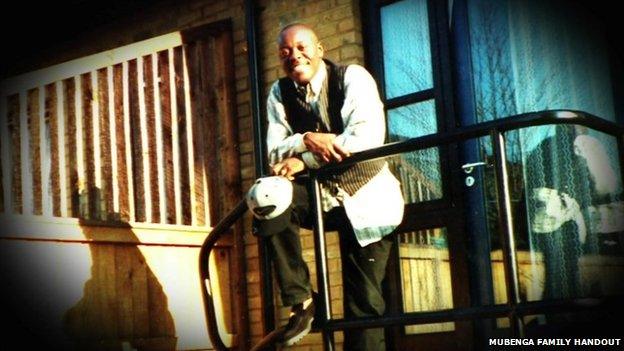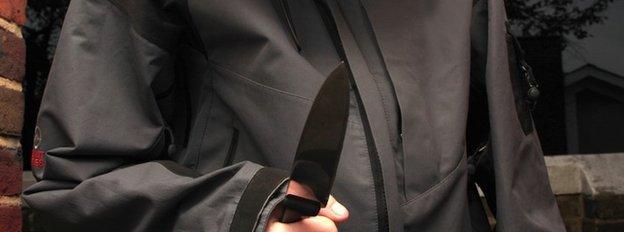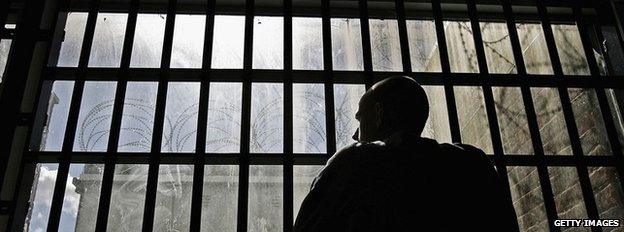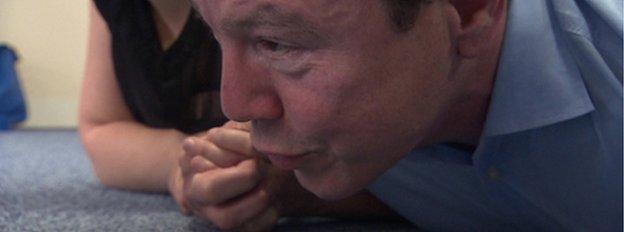Q&A: How is restraint used in the UK?
- Published

Three security guards have been cleared of the manslaughter of Angolan man Jimmy Mubenga, who died in 2010 after being restrained during his deportation.
BBC News looks at restraint and how it is used in the UK.

What is restraint?
Restraint is used when agents of the state - including police officers, medical staff, hired security workers and even teachers - need to deal with potentially violent situations.
The aim is for staff to bring the person - or people - under control quickly.
For example, a prison officer might consider using restraint if a confrontation between prisoners was escalating.

What methods are used?

There are a wide range of restraint techniques used across different sectors - normally including defensive and aggressive moves and sometimes involving a team with specific roles.
Basic methods include:
arm holds
inverting wrists
pressure compliance
holding on the ground - face up, down, or in the recovery position
Equipment such as waist restraint belts, leg restraints, handcuffs or mobile chairs may also be used - but this is not necessarily routine.
The level and frequency at which restraint is used can vary widely depending on the sector, and there is no single overarching rulebook.

What training is required?

Professionals who use restraint are required to undergo training. They have to be able to assess a volatile situation quickly, choose the right method to deal with it and be able to move from one technique to another in a fluid situation.
For example, they may need to judge which approach is the safest and will provoke the least resistance from a violent person.
The Home Office says custody officers who escort detainees have to have passed a course, external on escorting safely.
They also carry out a risk assessment - looking at factors such as the detainee's:
health
ability to escape
behaviour in detention
risk to staff

Are there any legal controls on restraint?

Proportionality is key when it comes to restraint - so methods must be proportional to the threat faced.
Home Office guidance, external says: "The use of any restraint should be necessary, reasonable and proportionate, and have regard to all relevant circumstances; restraints should only be used for the minimum amount of time."
It also warns that if risks are not assessed and the use of restraint is not justified, its use "is likely to amount to inhuman and degrading treatment under Article 3 of the European Convention of Human Rights".
Elsewhere, the College of Policing, external points to legal requirements on force, stating: "Responsibility for the use of force rests with the police officer exercising that force.
"Officers must be able to show that the use of force was lawful, proportionate and necessary in the circumstances.
"Using handcuffs, for example, may not always be a necessary or proportionate response."

What do critics say?

Campaigners have long warned there is insufficient guidance on the use of restraint - particularly in confined spaces such as planes.
This is because the issue has been somewhat shrouded in mystery.
Those carrying it out can be reluctant to discuss their methods - arguing that publicising them can help people to avoid restraint.
For example, some parts of the Ministry of Justice's 2006 Use of Force Training Manual, external - still used in prisons in England and Wales - cannot be read by the public.
One part reads: "This section has been redacted. It describes how to deliver a knee strike at close range, which is normally aimed at the prisoner's thigh."
Critics also point out that those subjected to restraint are generally very vulnerable - if they do get hurt, it is hard to navigate the complaints process from detention.

Have the rules changed?
In June 2014 the Home Office said the Jimmy Mubenga case had "brought into sharp relief" the need for "bespoke training", external on immigration removals.
It stressed that while the 2006 MoJ handbook was safe to use, it was important to issue tailored guidance on deportations.
Immigration and Security Minister James Brokenshire emphasised the need to "reduce anxiety, de-escalate tension, and to minimise the use of restraint".
The guidelines also reiterated that "use of force must always be a last resort".

Where else is restraint used?

A demonstration of the face-down restraint technique
Restraint can also be used in schools, youth offender facilities and medical environments, among others.
For example, National Institute for Health and Care Excellence (NICE) guidelines, external state that only trained staff should be able to restrain people in mental health hospitals - and they have a duty to act in the patient's best interests.
In April 2014, the government announced new controls to "overhaul the outdated use of restrictive interventions, external - such as face-down restraint, seclusion and rapid sedation - in all health and care services".
It came after figures suggested controversial techniques such as face-down restraint were being used hundreds of times a year in some English mental health hospitals - a level described by ministers as "shocking".

How many deaths are associated with restraint?
It is difficult to put a figure on the number of deaths that have been directly caused by the use of restraint in the UK. And there are no overarching statistics.
The Independent Police Complaints Commission points to its report on the number of deaths "during or following police contact", external in England and Wales in 2013-14.
It says: "Of the 11 fatalities in or following custody, it is known that three involved some form of restraint. This does not necessarily mean that the restraint contributed to the death.
"All incidents are subject to an independent investigation," it adds.